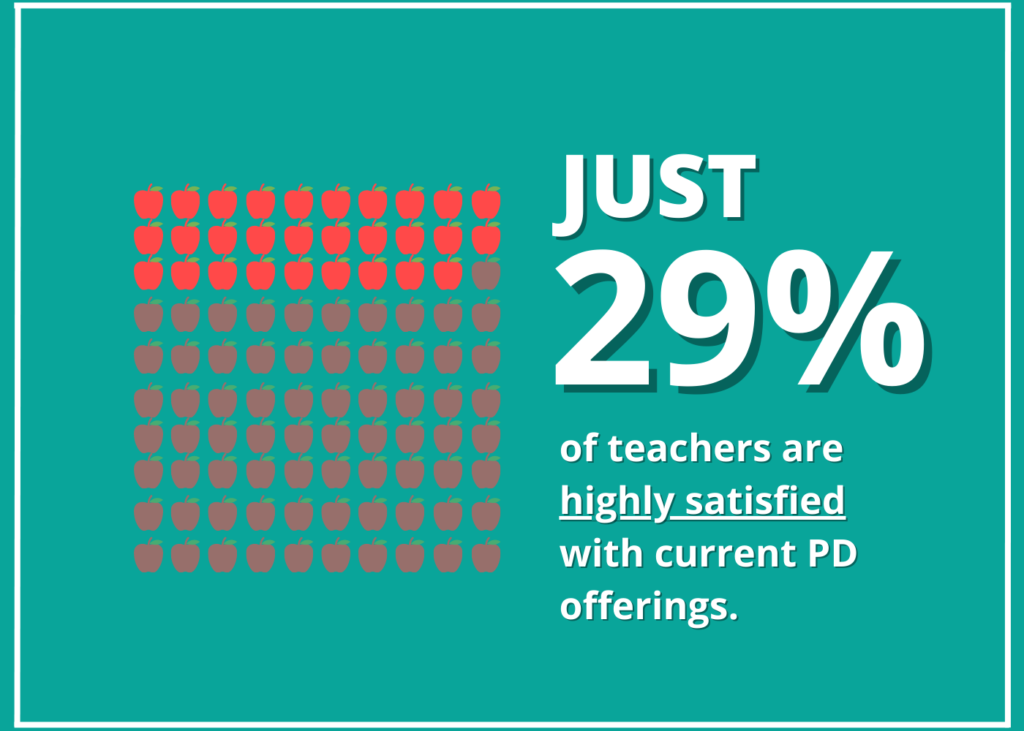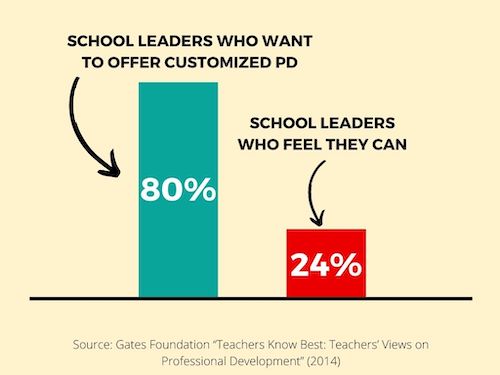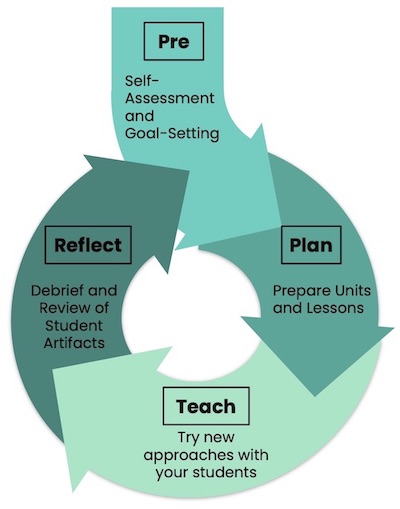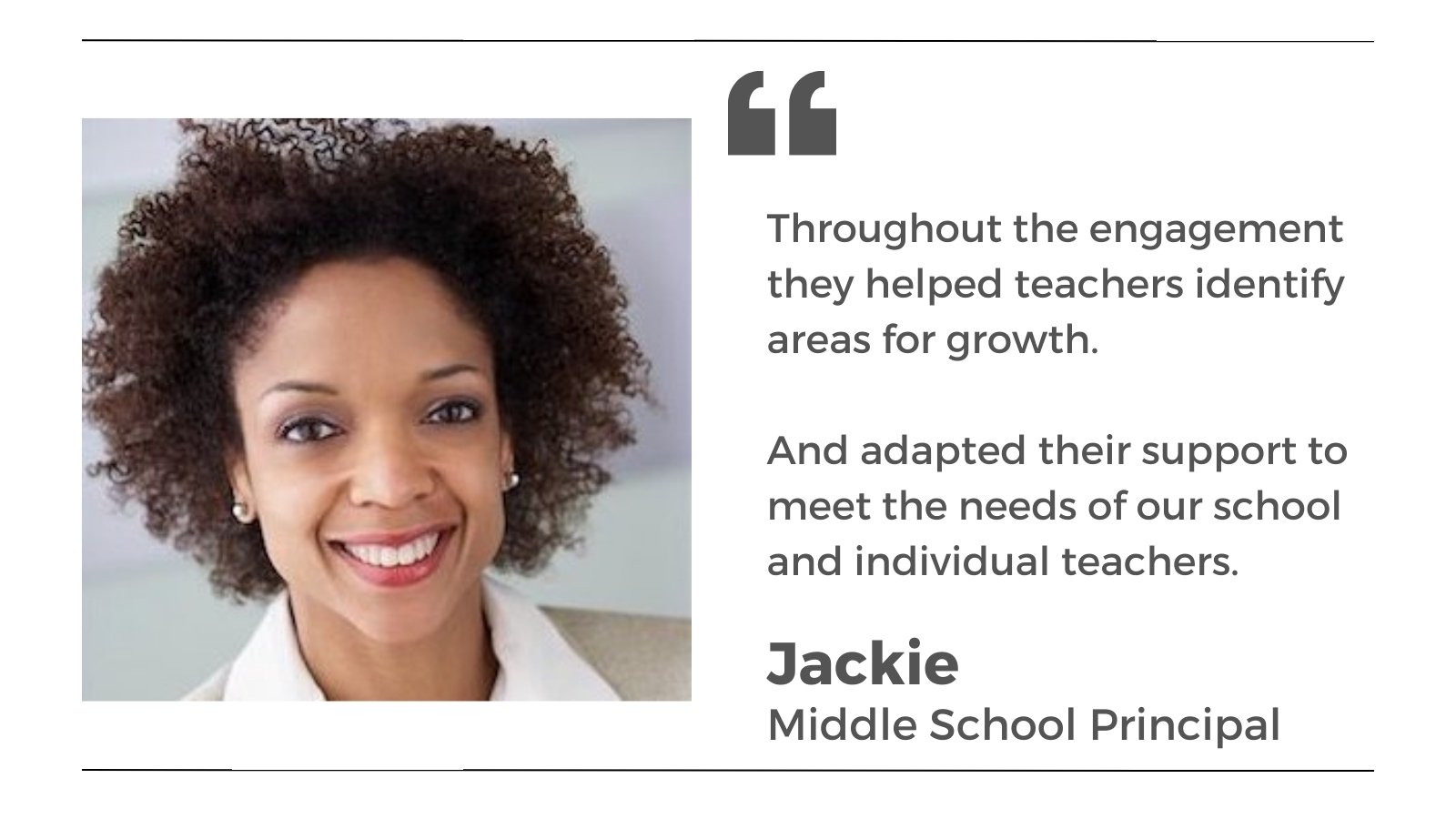
Addressing The Problem with Homework
Many educators are starting to recognize the problem with homework. And while homework is almost universal, there is little evidence that it actually works.

Any teacher can tell you that there’s a problem with professional development. Each year, US schools spend billions on professional learning. Yet, there’s scant evidence that all the time and money spent on PD is improving classroom practices. That is, except when it comes to teacher coaching.
Studies have found that the most common approach to professional development is the one-and-done workshop. These same studies determined that, to be effective, PD must be sustained over time and tailored to the individual needs of teachers. Pretty much the exact opposite of the standard workshop.
So, can teacher coaching succeed where slideshows have failed? Read on to learn how to ensure your instructional coaching positively impacts classroom practice.
When I began teaching 20 years ago, professional development meant gathering with colleagues on Monday afternoon, for the weekly ‘lecture about why you shouldn’t lecture.’
I never saw PD as a way to improve my teaching practice. I didn’t even consider what the phrase “professional development” meant. I developed as a teacher by being a teacher: planning, teaching, connecting with students, and giving them feedback on their work.
What is your teaching superpower? Complete the self-assessment in our free Reflective Teaching Guide to better understand your strengths and areas for growth.
The weekly PD-by-PowerPoint was, at best, a break from grading. At worst, it was a distraction from the paperwork piling up on my desk.
 Research shows that I wasn’t alone. A Gates Foundation study found that just 29% of teachers are highly satisfied with the available professional learning options. It also found that “large majorities of teachers do not believe that professional development is helping them prepare for the changing nature of their jobs.”
Research shows that I wasn’t alone. A Gates Foundation study found that just 29% of teachers are highly satisfied with the available professional learning options. It also found that “large majorities of teachers do not believe that professional development is helping them prepare for the changing nature of their jobs.”
Further support for coaching comes from a series of studies that suggest it takes 20 to 100 hours of professional learning, over 6 to 12 months, to positively impact teaching practice.
Yet the vast majority of professional learning still consists of one-and-done workshops. Over 80% of teachers surveyed report participating in workshops over the past year. Less than 25% report receiving regular coaching (at least once a month).
Teacher coaching is a supportive, learner-centered approach to professional development. And it’s fast-becoming the preferred alternative to lecture-based PD.
Imagine if a professional baseball made its players sit through lectures about how to grip a bat or run the bases. Or if coaches mandated that each player hit 40 home runs per year. Would you expect this team to be successful?
Of course not. A high-level player already knows the standard advice. They know that their goal is to hit home runs. To actually improve their swing, they need individualized feedback about their swing. They need ongoing guidance as they try new approaches.
Yet, many schools and districts still believe they can improve teaching through mandates and slideshows.
The reality is that even first-year teachers have completed coursework on topics like differentiation and student-centered learning. So generic presentations about “how children learn” rarely translate into effective teaching.
Teachers are professionals. They need professional development that recognizes their skill and experience. Support that’s tailored to their specific needs, and non-judgmental. They need help translating education theory into classroom practice.
And that’s where teacher coaching comes in.
Workshop Lesson Plan | Digital and Print
$2.00
Add to cart
One key to the impact of teacher coaching is its supportive approach. Coaches don’t set or enforce standards of performance and compliance. Instead, they help teachers clarify and reach their own professional learning goals.
But providing effective coaching to an entire school or district isn’t easy. A study by Advancement Courses found that 80% of school leaders want to provide teachers with individualized, customized options for PD. But just 24% feel capable of doing so.
 The reason is that education administrators who implement coaching programs have no experience implementing such programs. And why should they? Implementing a coaching program is something a school or district admin will probably do just once in their entire career.
The reason is that education administrators who implement coaching programs have no experience implementing such programs. And why should they? Implementing a coaching program is something a school or district admin will probably do just once in their entire career.
Many hire coaches before putting the necessary systems and policies into place. There’s a belief (or hope) that a coach will just pop into teacher’s classrooms, wave a magic wand, and teaching will improve.
Unfortunately, the ‘hire and hope’ approach rarely works. And by the time schools realize there is a problem, thousands of hours and millions of dollars have already been wasted. Once teachers participate in ineffective coaching, they will be twice as resistant to working with coaches in the future.
The good news is that there are proven coaching models with a track record of supporting transformative growth. By following the 5 tips below, you’ll ensure that your coaching has the greatest chance of success.
Questions about implementing a high-impact teacher coaching program in your school or district? Schedule your free consultation today to ensure your program achieves its goals.
The first step to launching a successful initiative is to identify what you are trying to achieve. And “improving teacher practice” doesn’t cut it.
Instead of relying on vague ideas of how coaching will help your school, create SMART Goals. A SMART Goal is specific, measurable, achievable, relevant, and time-sensitive.
Since coaching is about helping teachers develop their own goals, this can get tricky.
Teachers should create their own goals. So the school’s short-term goals should focus only on execution. Have you enrolled the intended number of teachers? Are the sessions taking place according to schedule?
School and district-wide outcomes goals, for things like student satisfaction or achievement scores, should have long timeframes (two years or more).
Individual coaches, should develop three-tiered SMART Goals:
For resources to help teachers reflect on their practice and develop SMART Goals, download our free Reflective Teaching Guide. For coaches, our Transformational Coaching Workshop will walk you step-by-step through the process of developing your own three-tiered coaching goals.
Teaching is complex. So when teachers try a new approach, it rarely works the first time. The reason teacher coaching is the most effective form of professional development is its consistency.

A teacher coaching cycle begins with a round of reflection and goal-setting. Then, teacher and coach plan and implement relevant classroom activities. Finally, you reflect on the learning that took place and the growth that was made.
There are many versions of the coaching cycle, but they all follow this general principle. And the key to success is that coaching happens on a regular basis.
If you meet with a teacher to plan a lesson, you’ll want to teach it soon after you plan it. And you’ll want to debrief while the experience is still fresh in everyone’s mind.
That’s why the most effective teacher coaching involves frequent contact between teacher and coach: at least once a week.
If, for example, you only have ten sessions with each teacher, better to schedule them within two months, than spread them across the entire year. Such focused support will allow your teachers to achieve noticeable growth in a short time.
In some cases, schools want to provide consistent support, but lack the personnel to do so. In these cases, partnering with a virtual coaching provider can be an efficient and cost-effective option.
Another important feature of a coaching program is a method for tracking progress.
It may seem counterintuitive to track the progress of coaching. After all, coaching is a supportive, non-evaluative form of professional development.
But there are several ways to measure the impact of coaching without forcing coaches to evaluate teachers.
For one, school and district leadership should be able to tell whether sessions are taking place. If coaches are assigned to work with certain teachers, they should report how often they met with each teacher, and the type of session: planning sessions, demo lessons, or observations.
Coaches should also help teachers understand the progress they are making toward their own goals. If a teacher wants to improve student collaboration, they can use rubrics to measure how effectively students work together. By comparing these rubrics over time, teacher and coach can determine whether their efforts are having the desired impact.
When I started coaching, I kept track of my sessions on paper logs or spreadsheets. But this approach quickly became unwieldy. And it was almost impossible to identify trends or track progress. Now I use a program specifically designed for coaching initiatives, called TeachBoost Coach. So far, I’ve been extremely happy with the interface and their customer support.
I’ve worked in schools, and with schools, that support new teachers with “mentoring” programs. There’s nothing wrong with matching experienced veterans with rookies. But such programs shouldn’t be confused with instructional coaching.
Coaching isn’t something a teacher can do on their prep. It’s true, coaches need many years of classroom experience to be effective. But for coaches to be effective, they need to focus on coaching. Coaches transitioning from the classroom also need professional development specific to coaching.
Even as an experienced teacher, with over a decade in the classroom, my transition to coaching was far from easy. I was no longer able to focus on a single subject area or grade level. And just as teaching math was a distinct skill from doing math, I realized that teaching teaching was a distinct skill from doing teaching.
In addition to ensuring coaches are qualified, schools also need to be careful of policies that may inadvertently interfere with effective teacher coaching.
I once coached a special-ed teacher who started each class with a frustrating routine. She made every student write down the lesson objective, essential question, and standard. Given the unique needs of her students, this could take up to 20 minutes of class time.
I suggested she switch up the opening routine to something more engaging. The change was immediate. Students were visibly engaged and were actually learning math. That is, until the administration found out. I was called down to the office and told, quite emphatically, that the old routine was a school-wide requirement.
I’ve since come to believe that top-down school cultures aren’t the best fits for coaching. Coaching is a bottom-up approach to improving teaching practice. To work, it requires that teachers and coaches have the flexibility to explore new approaches.
Last, but certainly not least, effective teacher coaching requires that teachers are ready to be coached. Coaching is about supporting teachers in reaching their own goals. As such, to benefit from coaching, a teacher needs to have goals. Or at least be willing to develop them.
It can be tempting to assign coaches to teachers who are struggling. And just because a teacher is ineffective doesn’t mean they won’t benefit from coaching.
But it’s not a coach’s role to force change on a reluctant participant. If a teacher is being assigned coaching due to performance, that needs to be made clear. Their supervisor needs to be the ‘bad cop,’ so the coach can be the ‘good cop.’
Some of my most effective coaching partnerships were with teachers on improvement plans. They knew that their principal was unhappy with their performance. And my support was offered as a resource to help them reach their improvement goals.
But it’s even better when teachers opt-in to coaching. If a school with 35 teachers requests coaching for their entire faculty, I’ll typically recommend they secure coaching for just 10 to 15, and have teachers apply to participate.
When coaching feels like a privilege, teachers participate more enthusiastically, and reap greater benefits.
 Supporting Your Teacher Coaching Initiative
Supporting Your Teacher Coaching InitiativeIf you’re looking to get the most out of your teacher coaching initiative, the right support is crucial.
Download our free Reflective Teaching Guide to help your coaches get started. This eBook is jam-packed with strategies and resources that will help coaches drive transformative growth.
And to find out how Room to Discover can help your school or district, schedule your free consultation today.
We’ll partner with you to develop your internal coaching program. Or we can provide virtual coaching directly to your teachers and PLCs. Whatever your teacher coaching goals, we’ll work with you to create a plan that meets the needs of your school or district.
 Jeff Lisciandrello is the founder of Room to Discover and an education consultant specializing in student-centered learning. His 3-Bridges Design for Learning helps schools explore innovative practices within traditional settings. He enjoys helping educators embrace inquiry-based and personalized approaches to instruction. You can connect with him via Twitter @EdTechJeff
Jeff Lisciandrello is the founder of Room to Discover and an education consultant specializing in student-centered learning. His 3-Bridges Design for Learning helps schools explore innovative practices within traditional settings. He enjoys helping educators embrace inquiry-based and personalized approaches to instruction. You can connect with him via Twitter @EdTechJeff

Many educators are starting to recognize the problem with homework. And while homework is almost universal, there is little evidence that it actually works.

Does the Danielson Rubric improve teaching? Maybe it’s an unfair question. After all, it’s a rubric, not a training program. But…

Effective curriculum plans are built by engaging teachers in a collaborative, school-based process. Getting a head start before summer break is key.